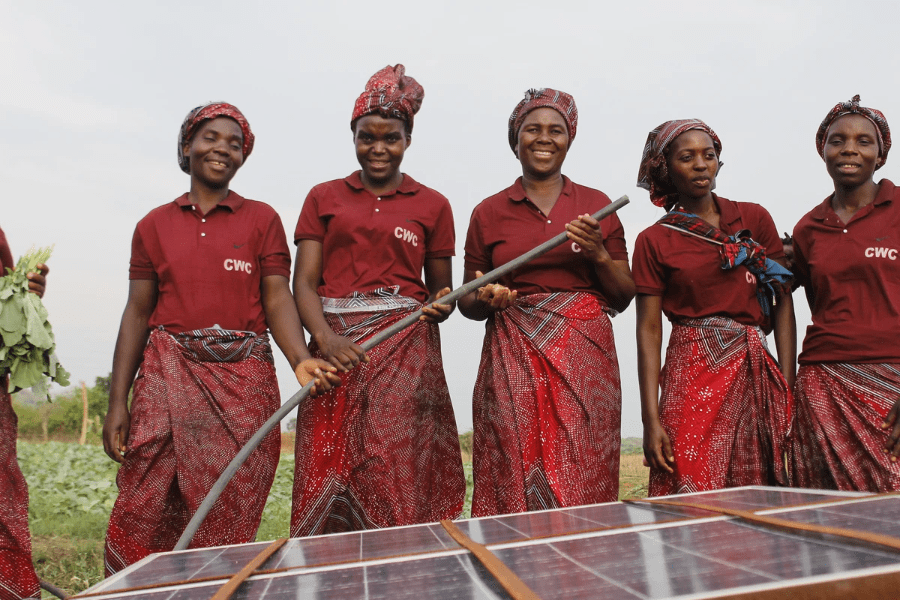If you’re a believer in climate change, you’ll likely have seen evidence of it over the years. Have the monsoons become worse in your area? Are cyclones more intense? For farmers – commercial and smallscale farmers alike – living in southern Africa (e.g. Malawi or Botswana or Zambia) have noticed that total annual rainfall is less or, if there is rainfall, is sporadic. In fact, at The Harvest Fund, we have seen sporadic rainfall in our farmers' areas: what happens is that we’ll notice that it may have rained in one location but, after traveling 1 kilometer, we would have seen that it had not rained there. Yet, when we monitored the meteorological forecast prior to the Zambian rainy season in September, October, and November, we observed that the rainfall prediction for the 2019 to 2020 was predicted to be “normal.” Yet, it is 2020, and what does normal rainfall even mean? We are grateful to not have suffered the same drought conditions experienced in the prior season but consecutive seasons of less-than-average rainfall mean that the following cycle of hunger and poverty perpetuates itself for our farmers and their nation:
- Less crop production
- Decreased national and household food supply
- Steadily increasing food prices
- Household food reserves run out
- Subsistence farmers (usually smallscale farmers) are forced to pay exorbitant prices for food staples…when they don’t have any money
Yet, you may wonder, why not request food aid? It’s a hugely political decision and perpetuates a cycle of dependency. Curious about this? Read the book Enough by Roger Thurow.
At The Harvest Fund, our goal is to lift our farmers out of extreme poverty PERMANENTLY by sustainably increasing their yields and income. We realize that we cannot control many environmental factors, such as rainfall. One of our solutions is to equip our cohorts of smallscale farmers with solar-powered irrigation systems. Our female farmers currently rely on completely manual forms of irrigation meaning that they collect water from a well or tap into a bucket, carry the bucket to a field, and manually water their field. This is ineffective or disempowering for many reasons:
- The task of drawing water from a well or tap falls upon children or women: this keeps children out of school and adds another task to a women’s ever-growing list of unpaid housework. Improved forms of water catchment contribute to women's empowerment.
- Maize is usually farmed on at least half a hectare or more. Half a hectare is equal to approximately 50,000 square feet or a 75x75 meter plot. Imagine using a bucket and manually irrigating a plot of that size.
- It’s time-consuming and physically burdensome to carry buckets of water from wells and around fields.
Considering all of the above, it’s also important to note that there aren’t unlimited supplies of water. Water is prioritized first for human use, then animal consumption and, if there’s any leftover, for crops.
Commercial farmers have complex irrigation systems, many of which rely on diesel, an electrical grid, and/or a backup generator. Smallscale farmers, particularly the ones who are as impoverished as the ones in our program, have no reliable access to the electrical grid and can’t afford diesel on a regular basis – there’s money only for basic needs. Plus, diesel is a fossil fuel and we’d rather not promote its use.
Cue the solar-powered water pump.
Obviously, this pump would be more expensive than a traditional diesel-powered pump or a manual pump but the long-term benefits are great: leverages renewable energy, is designed for smallscale farmers, and functions independently of a subpar grid.
How will smallholders (aka smallscale farmers) afford it? Through our experience, we’ve realized that it’s best not to completely gift or donate expensive agricultural tools. It encourages a system of dependency and we want to encourage our farmers to succeed independently of our support. Thus, we work carefully with the farmers to understand their income and expenses and design a repayment plan that they can afford. We subsidize a portion of the cost of the pump and irrigation system based on the women’s performance in our program as well as their income potential (remember, they can earn a LOT with year-round irrigation).
With advances in solar power technology and globalized manufacturing, there are an increasing number of solar powered pump and irrigation options. Now, it’s our mission to link these technologies with the women farmers who are most deserving of them.


